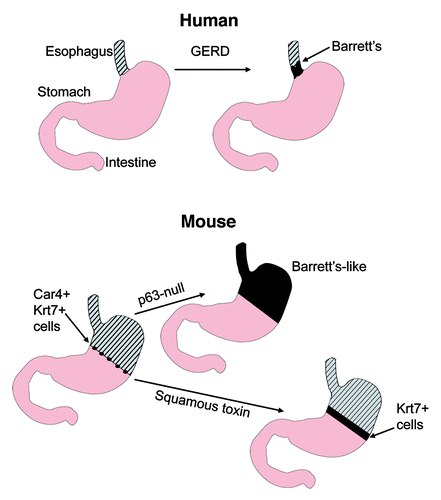Figures & data
Figure 1. Barrett’s esophagus and mouse models described in Wang et al. Top: human Barrett’s esophagus typically develops at the junction between the squamous epithelium of the esophagus (hatched) and the columnar epithelium of the stomach, in association with gastresophageal reflux disease (GERD). Bottom: in the mouse, the normal squamo-columnar junction is located within the proximal stomach (left). Wang et al. found that p63-null mice develop by birth a columnar metaplasia of the esophagus and proximal stomach that has molecular features of Barrett’s, including expression of Car4 and Krt7. Cells expressing these markers can be found at the squamo-columnar junction in normal adult mice. Expression of a toxin in the squamous epithelium of 3-week-old animals results in expansion of Krt7+ cells proximally into the squamous epithelium.
